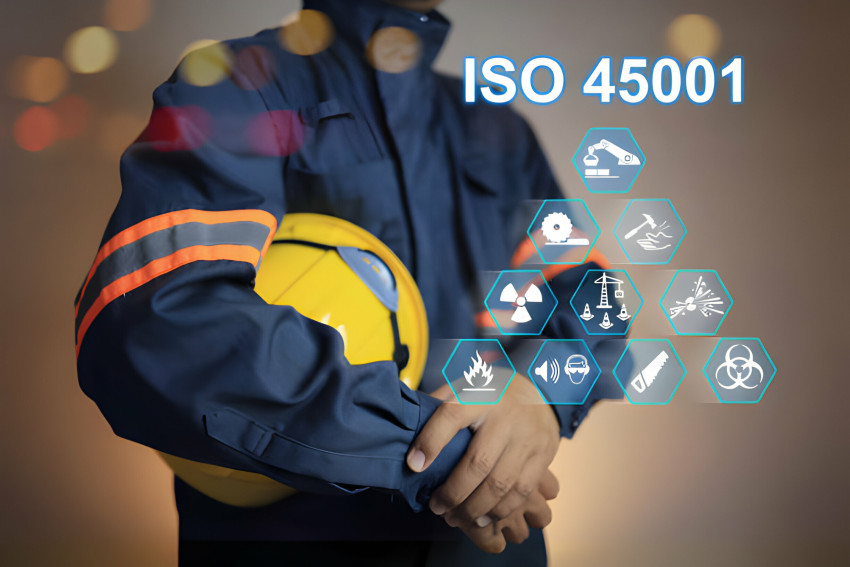
Occupational Health and Safety (OHS) is more than a regulatory requirement; it's a moral obligation and a strategic asset for organizations worldwide. The introduction of ISO 45001 certification marks a pivotal moment for businesses committed to providing a safe and healthy workplace. This standard not only sets the benchmark for OHS management systems but also offers a framework for organizations to proactively improve employee safety, reduce workplace risks, and create better, safer working conditions. The significance of achieving ISO 45001 certification lies in its universal applicability across industries and its focus on continual improvement and employee well-being.
The History and Development of ISO 45001
The journey from OHSAS 18001 to ISO 45001 reflects the evolving understanding of occupational health and safety as a fundamental part of business success. This section delves into the genesis of ISO 45001, highlighting the key updates and how they address modern workplace challenges. Understanding this evolution is crucial for organizations transitioning to or adopting ISO 45001 for the first time.
Key Components of ISO 45001
At its core, ISO 45001 is structured to integrate seamlessly with existing management processes, emphasizing the Plan-Do-Check-Act (PDCA) cycle and leadership involvement. This part of the article explores the standard's components, shedding light on its comprehensive approach to managing and mitigating OHS risks.
ISO 45001 Certification Process
Achieving certification requires a systematic approach, from initial gap analysis to implementation and beyond. This section guides organizations through each step, offering insights into preparing for audits and maintaining compliance. Special attention is given to the documentation and procedural requirements that underpin a successful certification journey.
Risk Management and ISO 45001
Central to ISO 45001 is the principle of risk management. This segment discusses how organizations can identify hazards, assess risks, and implement controls to mitigate them. It also covers the importance of emergency preparedness and the role of continuous monitoring in maintaining a safe work environment.
Health and Safety Culture
Creating a culture that prioritizes health and safety is imperative for the success of any OHS management system. This section examines strategies for fostering a positive safety culture, emphasizing the importance of leadership, communication, and employee engagement.
Performance Evaluation and Continuous Improvement
ISO 45001 encourages organizations to view OHS management as a continuous improvement process. This part of the article focuses on how to effectively evaluate performance, conduct internal audits, and implement corrective actions to drive OHS excellence.
Navigating ISO 45001 Certification Audits
The audit process can be daunting, but with the right preparation, it becomes an opportunity for improvement. This section offers practical advice for preparing for certification audits, understanding auditor expectations, and ensuring ongoing compliance.
Integrating ISO 45001 with Other Management Systems
For organizations already certified to other ISO standards, this section explores the synergies between ISO 45001 and standards like ISO 9001 (Quality Management) and ISO 14001 (Environmental Management), discussing the benefits of an integrated management system.
Technology and ISO 45001
Technology plays a crucial role in modern OHS management. This segment highlights how digital tools and data analytics can enhance the effectiveness of an ISO 45001 management system, from tracking incidents to analyzing trends.
Global Perspectives on ISO 45001
ISO 45001's global acceptance underscores its versatility and effectiveness. This part of the article looks at implementation challenges and successes, drawing on case studies from around the world to illustrate the standard's impact on different industries.
Legal Compliance and ISO 45001
Compliance with legal and other requirements is a cornerstone of ISO 45001. This section discusses how organizations can navigate the complex landscape of OHS regulations and integrate legal compliance into their management system.
Employee Well-being and ISO 45001
The standard recognizes that employee well-being extends beyond physical health. This segment explores the importance of mental health, ergonomics, and work-life balance in the context of ISO 45001, offering guidance on promoting holistic employee well-being.
Sustainability and ISO 45001
Linking OHS with sustainability and CSR initiatives demonstrates an organization's commitment to social responsibility. This section examines how ISO 45001 can contribute to broader sustainability goals, enhancing corporate reputation and stakeholder trust.
ISO 45001 Certification for Small and Medium Enterprises (SMEs)
Implementing ISO 45001 can be particularly challenging for SMEs. This part provides tailored advice for smaller organizations, focusing on scalable strategies and practical solutions to common challenges.
The Future of Occupational Health and Safety Management
The landscape of OHS is constantly evolving, driven by technological advancements and changing work environments. This concluding section speculates on the future direction of OHS management and the role of standards like ISO 45001 in shaping it.
Conclusion
ISO 45001 certification is not just a badge of honor; it's a testament to an organization's dedication to safeguarding its most valuable asset: its people. By following the step-by-step guide outlined in this article, organizations can navigate the path to certification, fostering a culture of safety and well-being that benefits everyone. Remember, the journey to OHS excellence is ongoing, and ISO 45001 provides the framework to continuously improve and adapt to new challenges.





